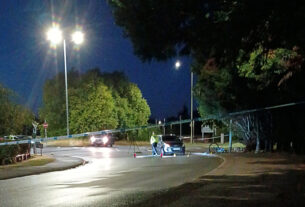 During the summer Lockdown the Government released an important policy statement. With news focused on other things it probably went unnoticed by most. The policy, released by the Department for Transport in July, is called ‘Gear Change: a bold vision for cycling and walking’ and can be found here: www.gov.uk/government/publications/cycling-and-walking-plan-for-england.
During the summer Lockdown the Government released an important policy statement. With news focused on other things it probably went unnoticed by most. The policy, released by the Department for Transport in July, is called ‘Gear Change: a bold vision for cycling and walking’ and can be found here: www.gov.uk/government/publications/cycling-and-walking-plan-for-england.
The policy statement really is a change of gear, going beyond anything that has preceded it. However, on the ground it is local authorities that are responsible for delivering a gear change for cycling and crucially the Department for Transport policy seeks to influence local authorities by the following means:
- Enforcement of standards and time limits on active travel schemes: those which are not compliant with the new national standards will not be funded or will have to return funds which were originally received.
- Local authorities’ performances on active travel will be taken into account when considering funding allocations for other transport schemes; this will apply to all government money through any funding body, including schemes delivered through pots such as the Transforming Cities Fund.
One of the national standards is the new Local Transport Note (LTN) 1/20 ‘Cycle infrastructure Design’, which was also published in July.
So what does this mean for us in Reading? We hope that it will encourage Reading Borough Council (RBC) to get transport schemes right.
Whilst well intentioned, too often we have seen schemes that are flawed in concept or detail. Getting it right really is a ‘no-brainer’ – it means public money is most effectively spent, it means schemes deliver their intended outcome and it means that citizens and stakeholders have confidence in their local authority.
One of the elements in getting cycle schemes right is early and genuine engagement with local cyclists. Whilst professional consultants are necessary, it is also important for local authorities to recognise the extent and limits of their knowledge.
Having spent 30 years working as a professional engineering consultant I can say from experience that consultants don’t always get everything right.
Cycle campaigners may not have all the answers either, but we provide our advice and engagement for free, we have local knowledge of road conditions, and in the case of the Reading Cycle Campaign we have professional transport knowledge within our ranks.
The next test of whether Reading can get cycle schemes right will be the second tranche of Emergency Active Travel Schemes. These schemes arise from government funding allocations for emergency active travel schemes for local authorities due to the COVID-19 pandemic.
The first tranche of schemes were temporary projects that were implemented without consultation or engagement to enable quick delivery. These included the cycle lanes over Reading Bridge and the aborted one-way system in Gosbrook Road, Caversham.
The second tranche of schemes are meant to be longer term and, at the time of writing in early Autumn, are at concept stage. These include key strategic links such as Vastern Road, Castle Hill and London Road. Let’s aim to get them right.
Keith Elliott
RCC Secretary


I think the Reading Bridge cycle lanes are misconceived. They seem to have been put in because there’s space for them. But a better plan would have been to provide easy ways for cyclists heading that way to get to Christchurch Bridge, which is nearby and much safer. The Reading Bridge option takes cyclists to a terrible roundabout.